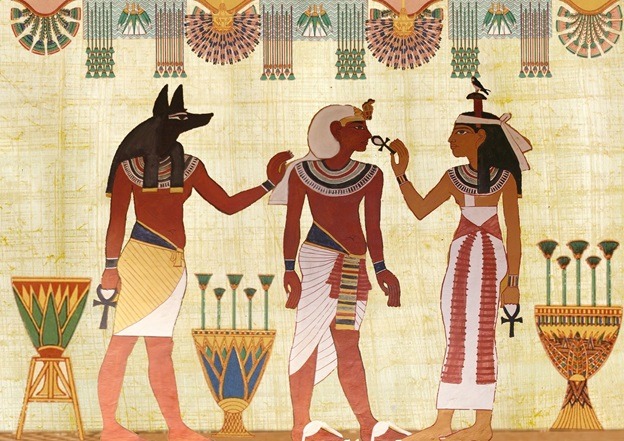When someone mentions Egypt, the first thing that comes to mind are pyramids, the Nile River and the rich historical heritage. Egyptian civilization is a revered era to all mankind, and it continues to provide new mysteries every day. However, there’s something else that Egypt is known for that many people may not be aware of; jewelry.
Egyptian jewelry is among the most unique on the planet as it goes beyond the dazzle of precious metals and stones. It is embedded with history and the rich culture in the nation. If you have been looking to get your hands on Egyptian jewelry, especially necklaces, then stick to the end and gain a few tricks and tips that will set you on your way to bagging something exotic for your collection.
Jewelry in Ancient Egypt
Jewelry has been part and parcel of Egyptian culture, and it dates back to the age of the Pharaohs, where it was worn by the high and the mighty of the society. It went beyond the basic role of accessorizing beauty; it was a symbol of status in the society. The richer someone was, the more dazzling and the more options they were open to wearing. This is why the necklaces of Egyptian pharaohs looked sophisticated and expensive. They were made with the best materials by the best artisans at the time. Unfortunately for the poor, the smurfs, and the slaves, this luxury was beyond their reach.
For some people, wearing certain types of necklaces was an indication that it was the gods choosing them over the others. This is why many people who had the means to afford these dazzling pieces were buried with them; the belief was that they would use them in their journey to the other side.
Symbolism of Egyptian Necklaces
Necklaces used to and continue to come in varying shapes and designs. One thing they have in common is that they come embedded with precious stones and gems, and each holds a unique symbolism that we have broken down below.
Red Jasper
Necklaces with red jasper represent the spirit of life. It was always believed that red, the color of blood, was the color of life, energy and power. This is why necklaces with anything red on them, like the red jasper, were revered, and anyone who was seen walking with one was respected. This is also the reason why the deceased nobles and kings were buried alongside their red jaspers, as it was believed it was a gift that would appease Isis as they crossed over from the mortal world to the next.
Malachite
Malachite is associated with vegetation. For this reason, it is seen as a symbol of fertility and new life. It was linked in the past to the papyrus plant, which was a very important material back in the day used as writing parchment, and writing was considered a gift from the gods. Therefore, it was scholars who would wear necklaces that had malachite in them. Malachite is also associated with good health, resurrection, and vigour.
Lapis Lazuli
Lapis Lazuli is a blue-colored semi-precious gemstone that can be confused for colored glass. It was seen as a symbolism of the blue sky, the abode of the god vigor the creative things that they bestowed upon man. For this reason, it was worn by many people who were considered to be closer to the spiritual side of life. In the modern-day, the Lapis Lazuli is associated with royalty, and rocking it in your necklace will sure get heads turning due to how brilliant it gets when struck with the light at the right angles.
Gold Egyptian necklaces
Gold has always been the color associated with everything good in the world and continues to carry a lot of weight in the modern world as it did in the past. In ancient Egypt, gold was reserved for royalty and nobles. It was a symbol of growth and warmth that the people believed was passed down to them from the heavens by the gods. It was described as the main compliment to be used in burials, and this is the reason why mummy tombs keep being found with all kinds of gold items. Rocking a gold necklace today is a sign of wealth because they don’t come cheap.
Bronze
Bronze was commonly used as collars, and they feature heavily in many artifacts from ancient Egypt. On top of being used to caret statues, bronze was used to make all kinds of ornamental necklaces and bangles that were heavily used across Egypt and continue to this day. The reason why bronze necklaces were so common was the fact that they were cheaper than most of the other metals and precious stones.
Alabaster Quartz
Alabaster Quartz is a whitish-looking gemstone that was associated with purity in ancient Egypt. Necklaces featuring this stone were common among the women who were considered to be virgins working in the pharaoh’s court. Today, they are not limited to just women as they can be worn by anyone who values style and doesn’t mind rocking a white necklace around their necks to match their outfit.
Conclusion
Necklaces are age-old ornamental accessories that are found in every known culture around the world. Each design and each material used to fashion one holds a specific meaning that goes beyond adding beauty to the wearer. Egyptian culture is among the riches on the planet, and therefore it is not a surprise that a large collection of their necklaces hold profound meaning to the wearer. If you have been considering getting a necklace that will make you stand out, try an Egyptian one, and you will be the talk of the party.
